Upholstery Design Colors New England Victorian Era
46 Etiquette Tips of the Victorian Era That Need to Make a Comeback
Sure they might have been sticklers for following the rules, but from being courted to dressing up for dinner, some Victorian mandates could be fun.
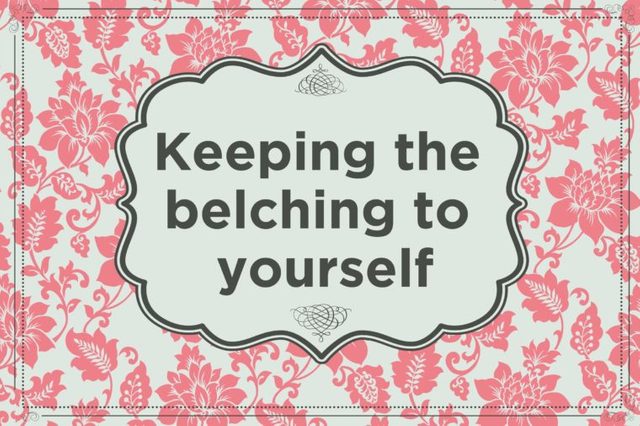 Tatiana Ayazo /rd.com, Shutterstock
Tatiana Ayazo /rd.com, Shutterstock
Keeping the belching to yourself
Letting out a giant burp after a meal in China and Taiwan would be seen as the highest form of compliment, but not so if you were dining in Victorian England. They would be appalled if you let out even the tiniest belch. In fact, it could mean social ruin. And don't even think about letting one rip, any form of passing gas would be beyond social redemption. These are the rude manners that are actually polite in other countries.
ⓘ
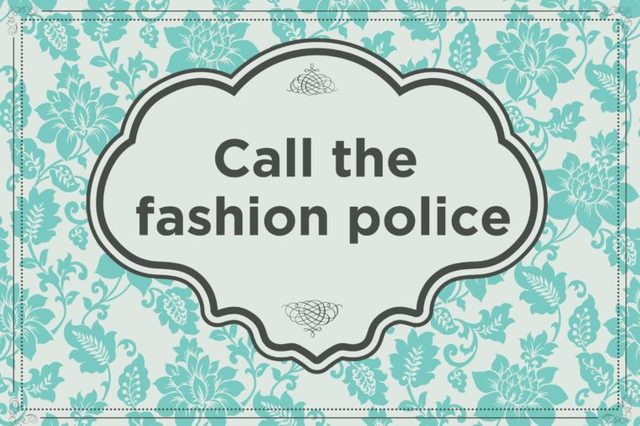 Tatiana Ayazo /rd.com, Shutterstock
Tatiana Ayazo /rd.com, Shutterstock
Call the fashion police
Crop tops and sweatpants were certainly not dinner attire back during Queen Victoria's reign. Dressing for meals remained very much a ritual for the upper class even after her death in 1901. Of course, it took some work to get ready to dine like a lady or gentleman. Like having their own personal stylists, maids and butlers would assist with everything from picking evening gowns to accessories. No maid or butler worth their salt would let their charge show up looking like a vagabond.
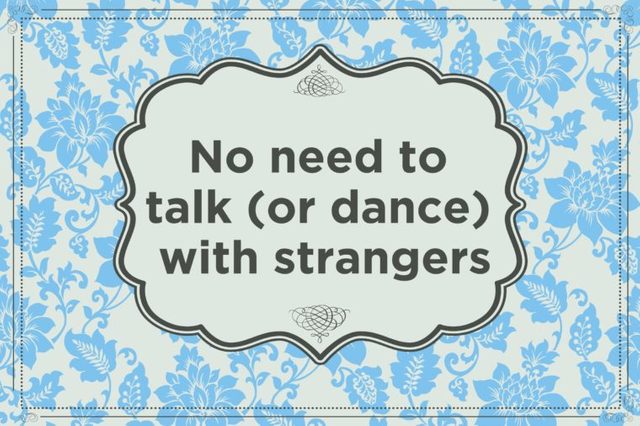 Tatiana Ayazo /rd.com, Shutterstock
Tatiana Ayazo /rd.com, Shutterstock
No need to talk (or dance) with strangers
No need to worry about being asked "What's your sign?" or having a girlfriend rescue you from unwanted suitors. A lady of class couldn't just socialize with anyone. If you caught the eye of a handsome gentleman across the ballroom it would be totally inappropriate for him to ask you for a spin around the dance floor. Only if a woman was properly introduced and the gentlemen in question met with the approval of her family would a waltz ever be considered.
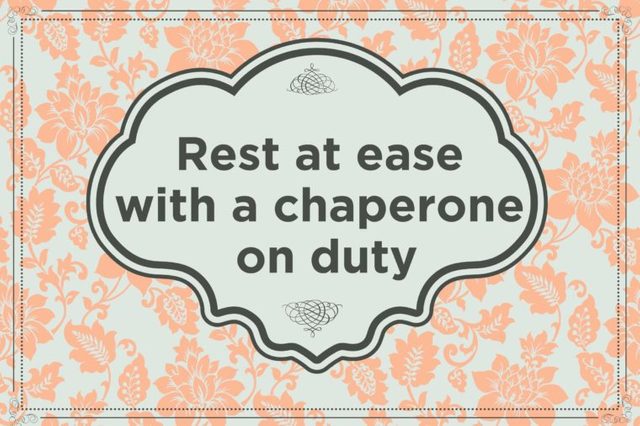 Tatiana Ayazo /rd.com, Shutterstock
Tatiana Ayazo /rd.com, Shutterstock
Rest at ease with a chaperone on duty
Back then you didn't have to worry too much about your daughter sneaking around with the boy next door. That was big time taboo for both sexes as it could risk more than your reputation, it could socially ruin you. It was also a good way to keep Grandma busy. A gentleman and young lady would always be accompanied by a chaperone and usually that was an elderly relative. Only after marriage were man and woman allowed to frolic on their own.
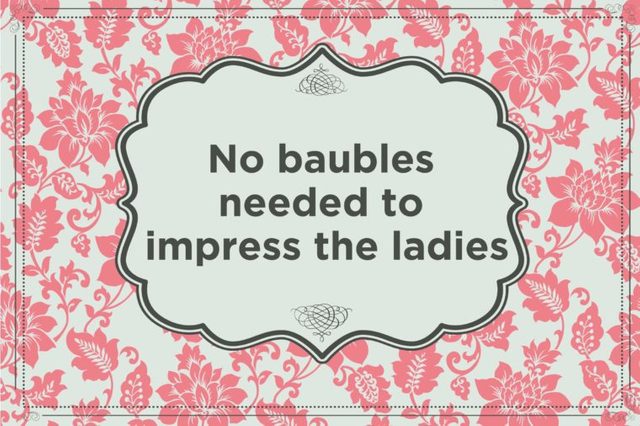 Tatiana Ayazo /rd.com, Shutterstock
Tatiana Ayazo /rd.com, Shutterstock
No baubles needed to impress the ladies
Sorry, girls! If you were a female in the Victorian era, jewelry and fancy gifts were unacceptable overtures from that special someone. That was especially true if you weren't engaged or related. According to Victoria-era.org and etiquette expert of the 1870s – 1890s, Professor Thomas E. Hill, there were only four items a lady could accept from a gentleman without causing a stir; books, confectionery, flowers, or sheet music. Since flowers and food were perishable they left no obligation upon the lady receiving them. Perhaps books and sheet music got a pass as they occupy your mind and therefore provided distraction from thinking about a beau.
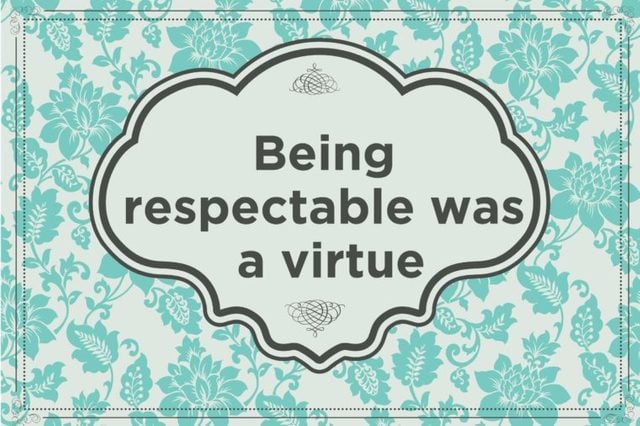 Tatiana Ayazo /rd.com, Shutterstock
Tatiana Ayazo /rd.com, Shutterstock
Being respectable was a virtue
Discretion was taken to heart back then. Disgracing one's family with scandal was the ultimate betrayal. Of course there was gossip among the upper class and secrets. After all, even our modern day Queen Elizabeth II has had to deal with many rumors and scandal during her reign. But both women and men of station at least tried to refrain from making a spectacle of themselves. So it's unlikely you'd find any guests to be on the Housewives of Victorian England.These White House dining etiquette rules are very interesting!
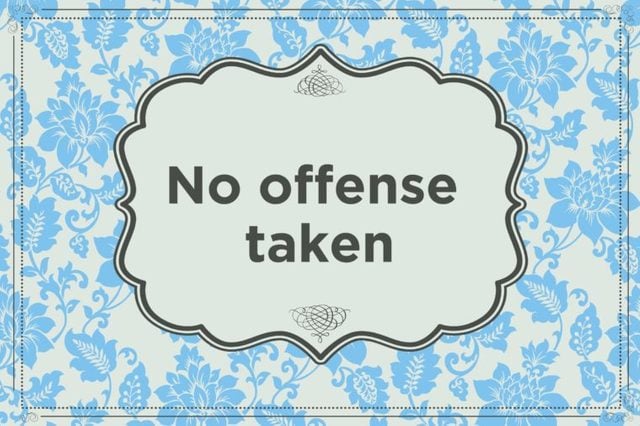 Tatiana Ayazo /rd.com, Shutterstock
Tatiana Ayazo /rd.com, Shutterstock
No offense taken
If Facebook was a thing back in Victorian days, you'd first need a proper introduction to friend someone especially if they were of higher social ranking than you. People of lesser rank could only mingle with a higher-ranking person with his or her permission. And the person of high rank could then drop you like a hot potato. They could ignore, or "cut" the person of lower rank—in other words "unfriend" you without as much as a good-bye.
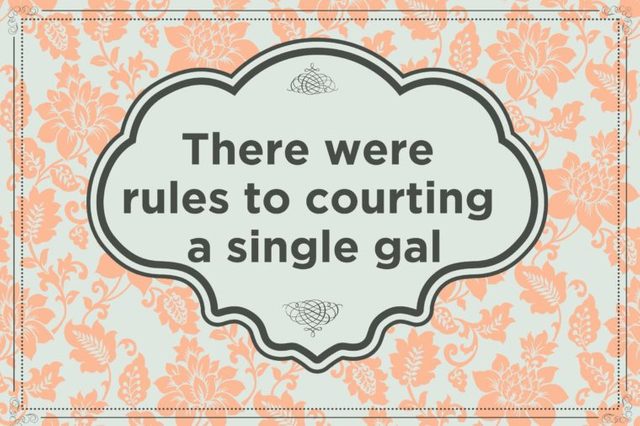 Tatiana Ayazo /rd.com, Shutterstock
Tatiana Ayazo /rd.com, Shutterstock
There were rules to courting a single gal
Like having her very own entourage, a single Victorian woman was rarely alone. They had to be accompanied on excursions by either family or someone older and preferably married. Courting a woman of high society had lots of rules. A gentleman would keep his distance when walking together although if your lady was about to fall in a puddle a gentleman could offer his hand to save her. There was no such thing as taking your girl for a spin around town. Not if you didn't want destroy both your reputations. A proper young lady would never ride alone in a closed carriage with a man who wasn't a relation. Here are the driving etiquette rules you forgot since drivers ed.
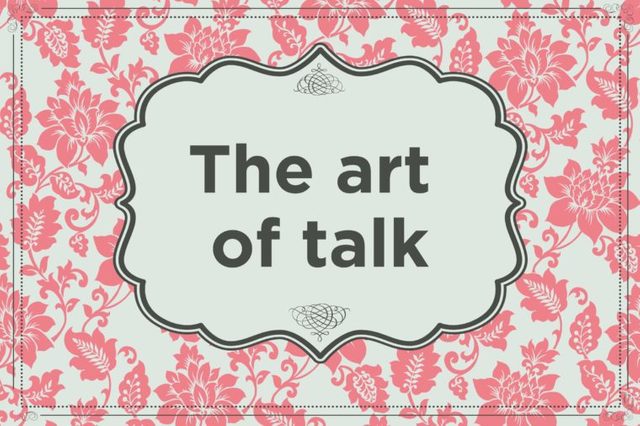 Tatiana Ayazo /rd.com, Shutterstock
Tatiana Ayazo /rd.com, Shutterstock
The art of talk
Discussing politics in the company of guests would be deemed a bad idea in any era. In the days of Queen Victoria, being adept at the art of conversation while cultivating polite manners was a talent. However, there was a distinct difference between appearing charming and appearing as a smarty-pants. Etiquette books of the era concentrated on perfecting the lilt and tone of voice versus content. Be sure to follow these etiquette tips when you are a guest in someone's home.
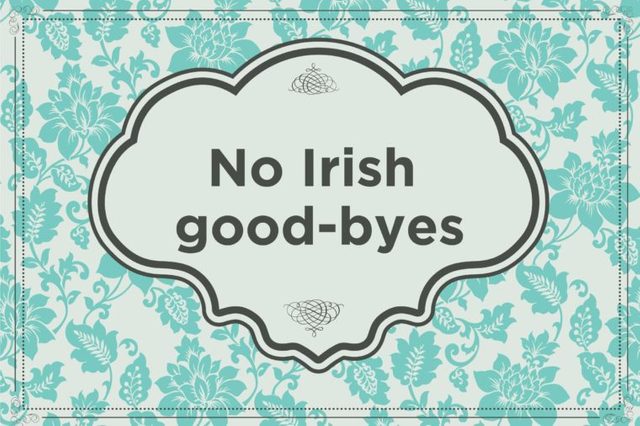 Tatiana Ayazo /rd.com, Shutterstock
Tatiana Ayazo /rd.com, Shutterstock
No Irish good-byes
Back in Victorian days an Irish good-bye would have been unheard of. Being courteous and thanking your host was expected. As was how you entered or existed any social festivity. A lady wouldn't ever leave a ballroom sans escort. And that didn't mean leaving with the cute bartender, it meant leaving with an older relative if you were single or with at least one other married woman if you were taken. For gentlemen staying around too long could be offensive as well according to The Gentlemen's Book of Etiquette and Manual of Politeness, 1876. "Do not be the last to leave the ball room. It is more elegant to leave early, as staying too late gives others the impression that you do not often have an invitation to a ball, and must 'make the most of it."
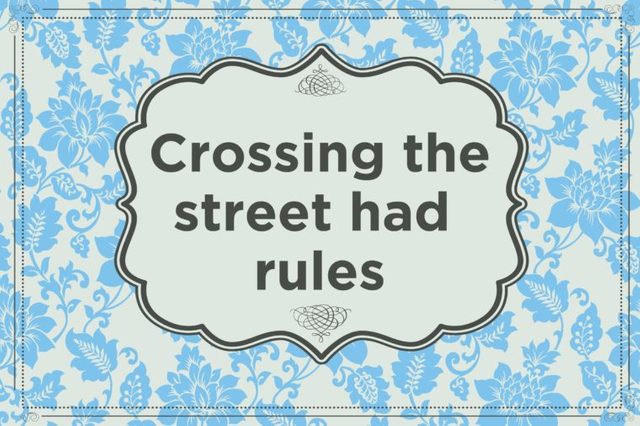 Tatiana Ayazo /rd.com, Shutterstock
Tatiana Ayazo /rd.com, Shutterstock
Crossing the street had rules
When crossing the street, a proper lady would lift her dress a bit above her ankle while holding the folds of her gown together in her right hand and drawing them toward the right. The Lady's Guide to Perfect Gentility directed women to avoid using two hands as you could end up giving everyone a free show of too much ankle—the horror! However, if both hands were needed to avoid a mud bath than society would look the other way.
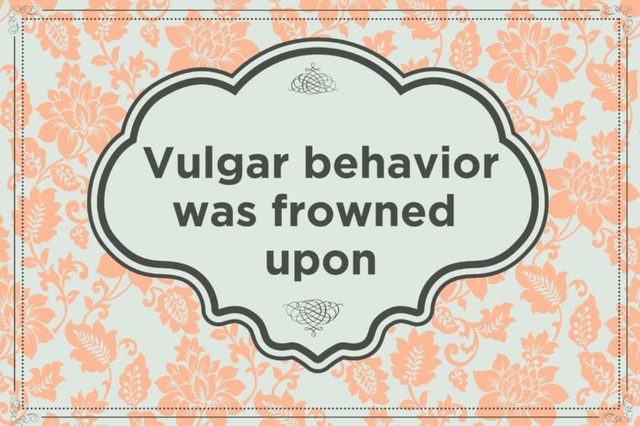 Tatiana Ayazo /rd.com, Shutterstock
Tatiana Ayazo /rd.com, Shutterstock
Vulgar behavior was frowned upon
Speaking loudly, laughing boisterously, or talking out of turn would have all caused more than a few eyebrows to be raised. You might have the moves like Jagger, but back then you had to think about how you physically behaved as well. Scratching any body crevice, crossing your legs, and even yawning were considered crude and pedestrian actions.
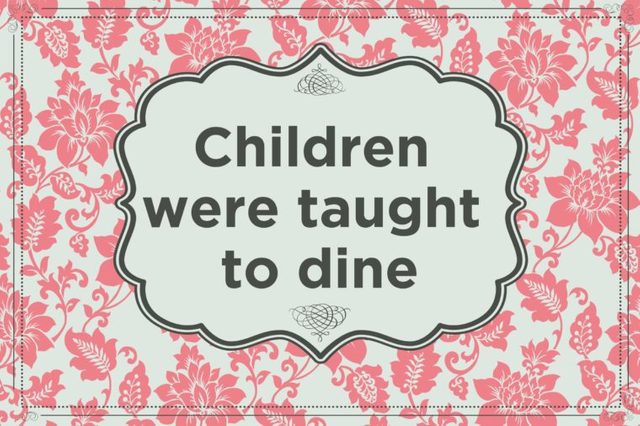 Tatiana Ayazo /rd.com, Shutterstock
Tatiana Ayazo /rd.com, Shutterstock
Children were taught to dine
There'd be no allowances for young children running rampant around the table during Victorian mealtime. On most occasions children ate separately from their parents. No slouching! Those chair backs were not for leaning, just decoration. Tough as love nannies would place knives on dining room chairs so that children would learn to sit upright. Ouch! Find out the manners every modern day parent should teach their child.
 Tatiana Ayazo /rd.com, Shutterstock
Tatiana Ayazo /rd.com, Shutterstock
Don't be a cheater
"What happens in Vegas, stays in Vegas" was certainly not the mantra back in Victorian England. Although playing cards was a pastime there were social norms to follow. According to Thomas E. Hill in his Manual of Social and Business Forums, "If possible, do not violate the rules of the game and do not cheat. Should you observe anyone cheating, quietly and very politely call it to his attention, and be careful that you do not get excited. People who experience ill-feeling at the game should avoid playing."
 Tatiana Ayazo /rd.com, Shutterstock
Tatiana Ayazo /rd.com, Shutterstock
Don't slurp your ice cream
Knowing the proper etiquette on how to eat certain foods was important then and now. If silver was involved, usually it was designed to slow an eater down to enjoy the company. It was common, for instance, for a host to serve ice cream with a sort of spork—which would only allow you to eat the ice cream in a dignified way before it melted. Once you could no longer get a chunk of it on your spork, you would be finished, no matter how much you wanted to lap it up. Here is how to dine properly at a restaurant.
 Tatiana Ayazo /rd.com, Shutterstock
Tatiana Ayazo /rd.com, Shutterstock
Having a maid
New wealth had trickled into the cities during the Victorian Era and led to a burgeoning middle class says the BBC. Employing a servant became a sign of respectability, even for the lower middle class. However, they could only afford one servant, hence her becoming the maid of all work. According to the Victorian author Mrs. Beeton, in The Book of Household Management, the maid of all work was to be pitied. "The general servant or maid of all work is perhaps the only one of her class deserving of commiseration. Her life is a solitary one and in some places her work is never done."
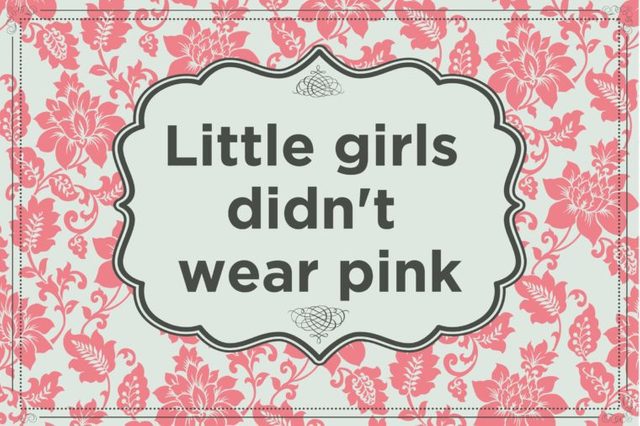 Tatiana Ayazo /rd.com, Shutterstock
Tatiana Ayazo /rd.com, Shutterstock
Little girls didn't wear pink
Victorians weren't color blind, but they had definite opinions about color. Red was considered a strong, virile, masculine shade, while blue was dainty, delicate, feminine. So young boys were more frequently seen in pink, while young girls favored pale blue. It wasn't until the early 20th century—quite possibly as late as the 1940s—that pink began to be universally assigned to girls and blue to boys.
 Tatiana Ayazo /rd.com, Shutterstock
Tatiana Ayazo /rd.com, Shutterstock
Dinner parties were Match.com
A socially acceptable way to court was at a dinner party. There was no specific placement for the guests at the dinner party. Consequently, this arrangement was favorable to courting because the guests could choose their seat mates. Dressing for dinner was the equivalent of getting ready for a hot date. Here are the ridiculous dating rules from the 1950s.
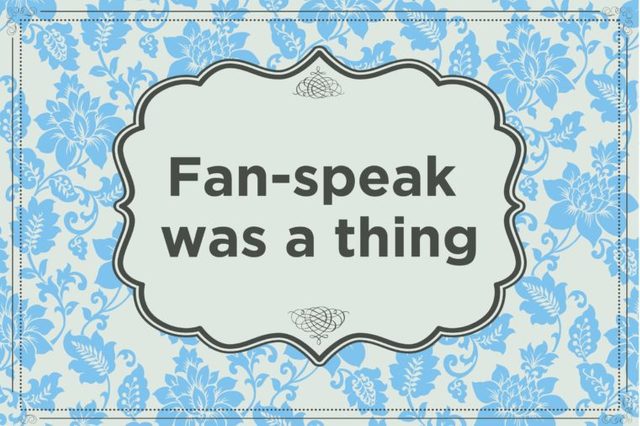 Tatiana Ayazo /rd.com, Shutterstock
Tatiana Ayazo /rd.com, Shutterstock
Fan-speak was a thing
There may have been no air conditioning back then, but women of the late 1800s used a fan for more than just keeping cool. "A woman could flirt with her fan," says Literary-liasons.com. And according to Literary-liasons.com different fan signals could get you jumped or dumped.
- Fan fast: I am independent
- Fan slow: I am engaged
- Fan with right hand in front of face: Come on
- Fan with left hand in front of face: Leave me
- Fan open and shut: Kiss me
- Fan open wide: Love
- Fan half open: Friendship
- Fan shut: Hate
- Fan swinging: Can I see you home?
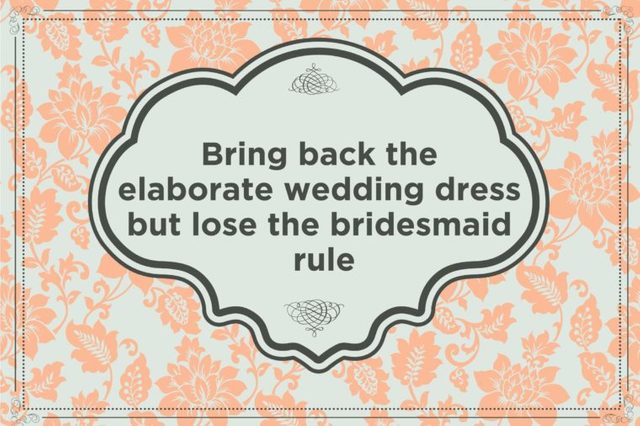 Tatiana Ayazo /rd.com, Shutterstock
Tatiana Ayazo /rd.com, Shutterstock
Bring back the elaborate wedding dress but lose the bridesmaid rule
Wearing white for a wedding is still popular today, unless you're the guest that is. But wedding dress styles run the gamut from mermaid to princess. Victorian brides not only wore white, but had full court trains, long veils, a bustle, elegant details, and two bodices—a modest one for the wedding and a low one for special occasions were the norm. Turns out bridesmaids could wear white, but if the bride was young they better have wrinkle-free skin. According to Town and Country Magazine, an etiquette handbook of the time mentions that it was acceptable for a young married lady to be a bridesmaid, but it would be "absurd" if the woman in question were single and aged. Here are the wedding etiquette rules you need to know.
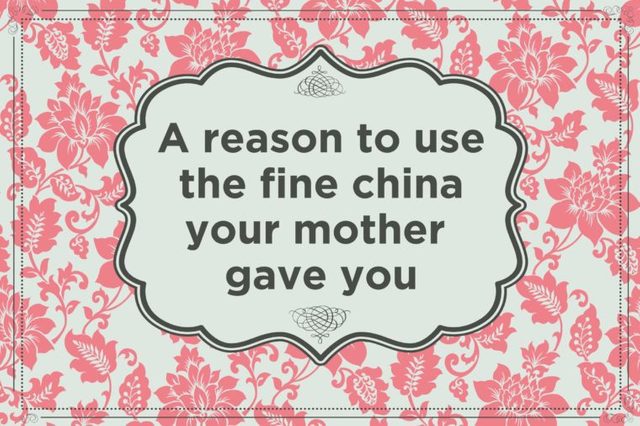 Tatiana Ayazo /rd.com, Shutterstock
Tatiana Ayazo /rd.com, Shutterstock
A reason to use the fine china your mother gave you
Besides dinner parties being instrumental to socializing and courting, this was a chance for a hostess to show off. She was expected to display every piece of fine china, stemware, and silver she owned. Of course, she also had a staff to clean up after her. Don't want to polish silver?
 Tatiana Ayazo /rd.com, Shutterstock
Tatiana Ayazo /rd.com, Shutterstock
People were impressed by science
New developments in science and medicine were significant. With increased specialization and developments in surgery and hospital building, many people had a greater chance of surviving illness. Most notably were medical breakthroughs in anesthetics. Even Queen Victoria took chloroform for the birth of her son in 1853. This helped people have more faith in institutions like hospitals and helped develop specialized workhouses and asylums for the most vulnerable members of society.
 Tatiana Ayazo /rd.com, Shutterstock
Tatiana Ayazo /rd.com, Shutterstock
You could take your BFF on your honeymoon
Girls trips are all the rage today. Hanging out with your besties and reading the perfect vacation book can't be beat. Of course, the best you could do back in Queen Victoria's day was to take a female companion on your honeymoon. Not quite the same, but it was customary for the bride to take a female companion along.
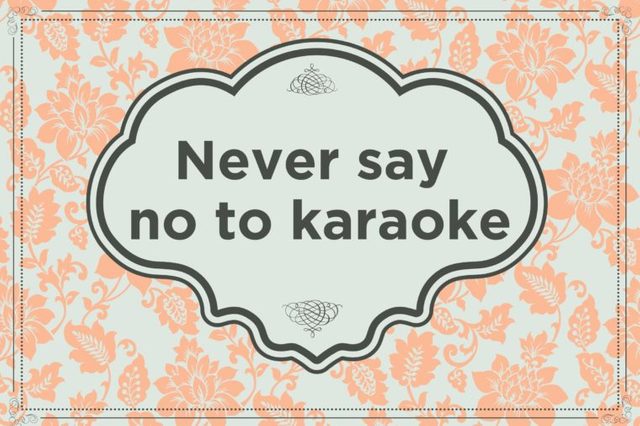 Tatiana Ayazo /rd.com, Shutterstock
Tatiana Ayazo /rd.com, Shutterstock
Never say no to karaoke
Don't be a party pooper. If your hosts asks you to belt out a tune you should accommodate him or her, right? But that was not an option over 150 years ago. One etiquette book from the time notes that if a gentleman was invited to sing and felt sufficiently sure his entertainment would provide pleasure, he was to comply immediately with the request. If, however, he refused, he was to "remain firm in [the] refusal as to yield after once refusing is a breach of etiquette."
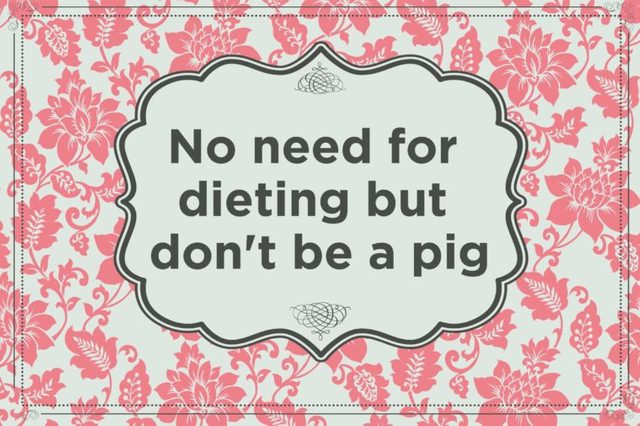 Tatiana Ayazo /rd.com, Shutterstock
Tatiana Ayazo /rd.com, Shutterstock
No need for dieting but don't be a pig
On historian Geri Walton's blog she notes, "be careful to avoid the extremes of gluttony or over daintiness at [the] table. To eat enormously is disgusting; but if you eat too sparingly, your host may think that you despise his fare." Not only would a hostess be very aware of what you ate and how you ate it, but she might be offended by what you didn't eat. Considering the Victorian hostess probably did not make the meal, one must give her credit for feeling the need to defend her cook or her choice of menu. And if you don't like something, swallow and smile; spitting it up in your plate would be a travesty.
 Tatiana Ayazo /rd.com, Shutterstock
Tatiana Ayazo /rd.com, Shutterstock
A gentleman for your every whim
Being taken care of by a man might offend a modern woman, but a Victorian gentleman had a duty when it came to dining with the gals. According to Geri Walton's blog, he'd be assigned to escort a lady to the table. He'd offer her his left arm and proceed through the parlor door first but with the lady following and still holding his arm. When they reached the dining room, before entering, the lady would drop his arm, the gentleman would pass through, wait until the woman passed him, and then take her to her assigned seat at the table. The gentleman was also not to seat himself until every woman invited was seated. But his job was far from over. He was to keep tabs on his escorted lady and ensure she was well helped. He was to lift and change her plate for her, pass her bread, salt, and butter, give her orders to the waiter, and pay her every attention in his power.
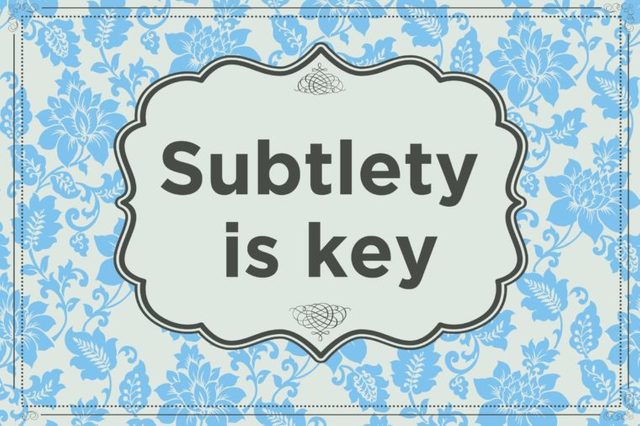 Tatiana Ayazo /rd.com, Shutterstock
Tatiana Ayazo /rd.com, Shutterstock
Subtlety is key
There was no need to high five each other or give head butts when men came upon each other in the Victorian England. A polite nod of the head between gentlemen, hand gesture or touch of the hat was the equivalent to yelling "What's up dude?" Some gentlemen bowed to acknowledge a casual acquaintance, but that didn't float with people you were better acquainted with. However, a bow should always be returned, even to an enemy.
 Tatiana Ayazo /rd.com, Shutterstock
Tatiana Ayazo /rd.com, Shutterstock
No potty mouths allowed
Back in the era of corsets and crinoline, ladies were heavily covered everywhere but their ears. They didn't have to as a well-bred gentleman never cursed or even discussed "impolite" subjects when ladies were present. Today we know women can dish it out as well as they can take it, but sometimes it's refreshing to have a man who doesn't use a four-letter word every other sentence unless it's in one of these four instances when it's OK to curse.
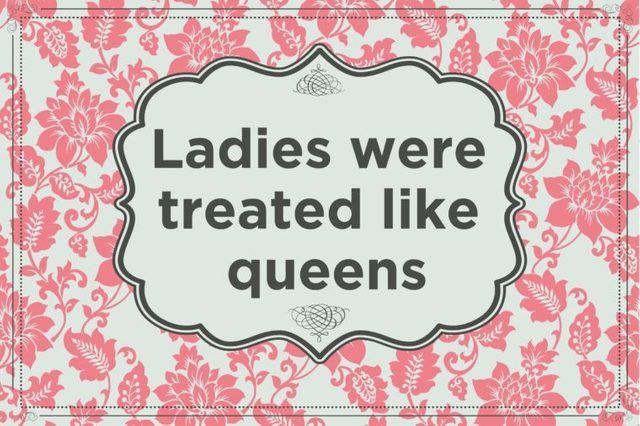 Tatiana Ayazo /rd.com, Shutterstock
Tatiana Ayazo /rd.com, Shutterstock
Ladies were treated like queens
Not sure what guys in the 1800s did to irk Queen Victoria, but there were a lot of rules for a gentleman to remember if he didn't want to be seen as exhibiting vulgar behavior. Here's a list of the basics of how to treat a lady Victorian style:
- Stand when a lady enters a room.
- Stand when a lady stands.
- Offer a lady your seat if no other seat is available.
- Assist the lady with her chair when she sits or stands. Especially at a table.
- Retrieve dropped items for a lady.
- Open doors for a lady.
- Help a lady with her coat, cloak or shawl.
- Offer to bring a lady refreshments if they are available.
- Offer your arm to escort a lady (with whom you are acquainted) into or out of a building or a room at all social events, and whenever walking on uneven ground.
 Tatiana Ayazo /rd.com, Shutterstock
Tatiana Ayazo /rd.com, Shutterstock
Get a second opinion
Ever have your guy leave the house looking like that? He should have sent you a selfie. In fact the first selfie was actually taken by this guy in 1839. At the very least didn't he look in the mirror? That never would have happened back in the day of white tails and top hats as a gentlemen might be familiar with the Etiquette for Gentlemen; or Short Rules and Reflections for Conduct in Society, 1847. This guide for guys instructed, "Before going to a ball or party it is not sufficient that you consult your mirror 20 times. You must be personally inspected by your servant or a friend."
 Tatiana Ayazo /rd.com, Shutterstock
Tatiana Ayazo /rd.com, Shutterstock
The hostess with the mostess
Perhaps there was a kinder atmosphere in the days of old or every host wanted their guests to enjoy their evening. Either way it was the host's duty to not let a female guest feel left out or out of sorts. As noted in The Gentlemen's Book of Etiquette and Manual of Politeness, 1876, "If the ball is given in your own house, or at that of a near relative, it becomes your duty to see that every lady, young or old, handsome or ugly, is provided with a partner, though the oldest and ugliest may fall to your own share." Here are all the tips you need for being a good hostess today.
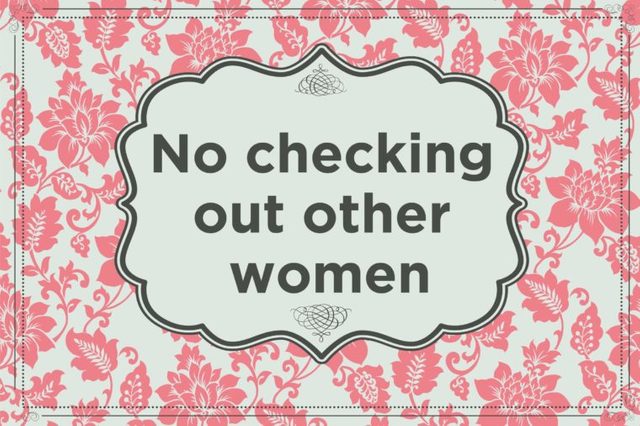 Tatiana Ayazo /rd.com, Shutterstock
Tatiana Ayazo /rd.com, Shutterstock
No checking out other women
Back then ladies didn't have to worry as much that their husband or beau's glances may stray. In the manual Etiquette for Gentlemen from 1857 this advice was given: "A gentleman, while dancing with a lady, should pay almost exclusive attention to her; and at the close of a dance ask her to take refreshments." It was definitely considered vulgar to be ogling other women while your girl was around.
 Tatiana Ayazo /rd.com, Shutterstock
Tatiana Ayazo /rd.com, Shutterstock
Don't do the Elaine
When Julia Louis Dreyfuss kicks up her heels or thumbs doing her Elaine dance on Seinfeld we all enjoyed a good chuckle. However, doing the "Elaine" at a Victorian ball would not get you the same lighthearted attention. In Hints on Etiquette and the Usages of Society with a Glance at Bad Habits, 1844, you were warned to "Dance quietly; do not kick and caper about, nor sway your body to and fro; dance only from the hips downwards; and lead the lady as lightly as you would tread a measure with a spirit of gossamer." It wasn't much better if you were a male according to the Etiquette for Gentlemen; or Short Rules and Reflections for Conduct in Society from 1847: "No man should attempt to dance without being well acquainted with the figures; for his blunders place the woman who does him the honor to dance with him, in an embarrassing situation, and he will make quite a different figure from what he intends."
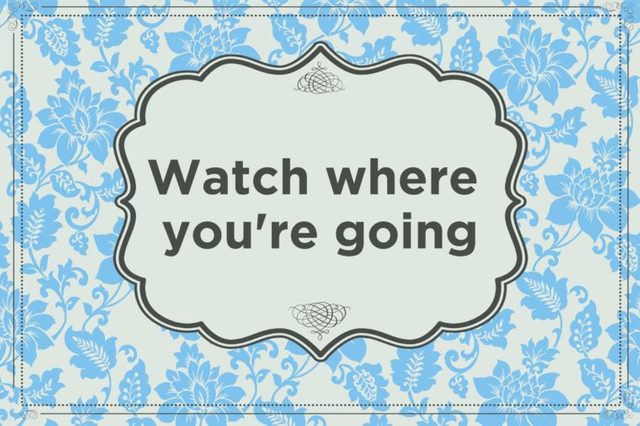 Tatiana Ayazo /rd.com, Shutterstock
Tatiana Ayazo /rd.com, Shutterstock
Watch where you're going
Forget about making your way through a crowded Manhattan street or subway in the late 1800s, especially if the ladies were around. If you as much as crinkled her crinoline you'd be a social klutz says Beadle's Dime Book of Practical Etiquette for Ladies and Gentlemen, 1859: "If a crowd is present, and a gentleman has occasion to make his way through a press of crinoline and drapery, he should proceed most carefully—haste would be very rude and inexcusable; the danger of soiling, or tearing, or disarranging a lady's costume forbids any gentleman making a careless step." Follow these elevator etiquette rules next time you're in a skyscraper.
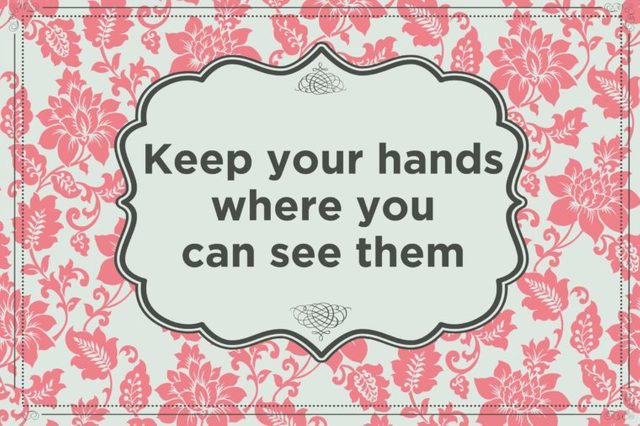 Tatiana Ayazo /rd.com, Shutterstock
Tatiana Ayazo /rd.com, Shutterstock
K eep your hands where you can see them
No need to worry about your date being a leech during Victorian dances. No touching below the belt was definitely a thing—as was putting your hands anywhere they didn't belong or couldn't be seen. "If a lady waltz with you, beware not to press her waist; you must only lightly touch it with the open palm of your hand, lest you leave a disagreeable impression not only on her ceinture, but on her mind," says the manual The Perfect Gentleman from 1860.
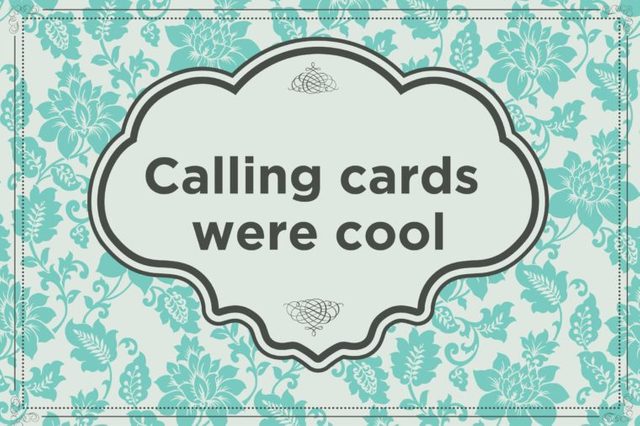 Tatiana Ayazo /rd.com, Shutterstock
Tatiana Ayazo /rd.com, Shutterstock
Calling cards were cool
Want someone to remember you or know you'd stopped by? Leave your calling card. According to howstuffworks.com, this was a way to announce your presence and arrange visits to keep up old acquaintances. The receiver customarily returned the favor in the form of a card or visit within a week. (Intimate friends could call right away without waiting for a card.) One would also customarily leave cards for a household during certain events, such as illness or engagements, to express condolences or congratulations. A very fine lady would go around in her carriage with a footman, who brought the cards into the house. And he would bring many. One married woman calling on another would bring one card with her name and two with her husband's name (for both mistress and master) in addition to cards for unmarried daughters or guests in the household. The names of the visitor's unmarried daughters could be written on the mother's card. These are the technology and phone etiquette rules you should be following every day.
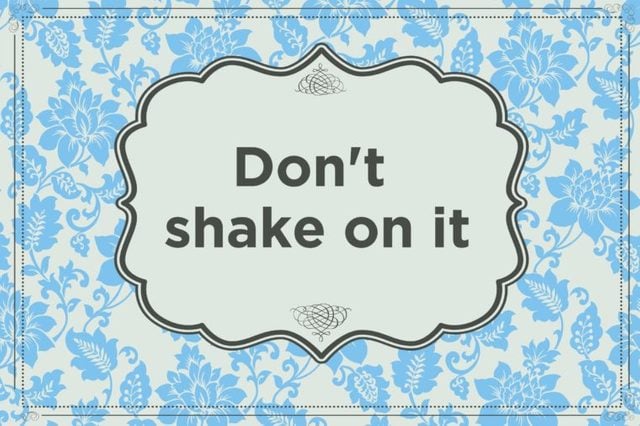 Tatiana Ayazo /rd.com, Shutterstock
Tatiana Ayazo /rd.com, Shutterstock
Don't shake on it
Perhaps a limp fish handshake would have worked in old England. "Shaking hands," according to Cassell's Manual, is an "inappropriate" term implicating a firm, vigorous shake. Instead, one must apply only "gentle pressure" and "slight movement from the wrist." And of course, a gentleman never initiated taking a lady's hand. These are the etiquette rules everyone in the royal family must follow.
 Tatiana Ayazo /rd.com, Shutterstock
Tatiana Ayazo /rd.com, Shutterstock
A gentleman should try and score the best seats
Don't expect your next date to score you tickets to see Hamilton on Broadway if he asks you to a show. But if a gentleman asked a lady to the theater in Victorian days and she said yes, he was to secure the best seats within his means. Of course, this was after sending her a written invitation not later than the day previous to the entertainment, written in the third person, on white note-paper of the finest quality with a matching envelope to boot. (Sounds like a lot of work!) And said lady was then expected to send her reply immediately, so that should she be unable to accept, the gentleman may secure another companion. Ugh, and do it all over again.
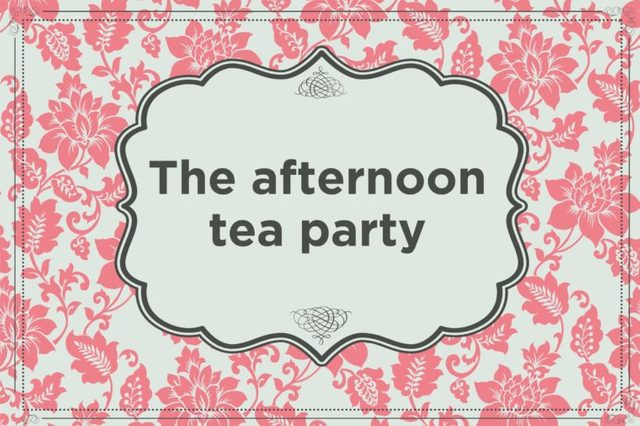 Tatiana Ayazo /rd.com, Shutterstock
Tatiana Ayazo /rd.com, Shutterstock
The afternoon tea party
While drinking tea as a fashionable event is credited to Catharine of Braganza, the actual taking of tea in the afternoon developed into a new social event some time in the late 1830s and early 1840s, according to the website afternoontoremember.com. The custom was potentially started by Anne, Duchess of Bedford when she requested that light sandwiches be brought to her in the late afternoon because she had a "sinking feeling" due to the long gap between meals. Supposedly she began to invite others to join her and hence the tradition. You might not know that the habit of putting milk in tea came from the French and the proper holding of the cup is to not put your pinky "up."
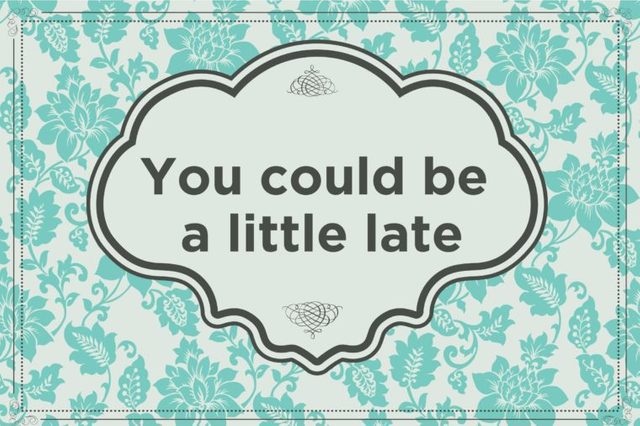 Tatiana Ayazo /rd.com, Shutterstock
Tatiana Ayazo /rd.com, Shutterstock
You could be a little late
Running behind the clock was sometimes OK in the 1800s. There were occasions when arriving on time was considered rude, says Town & Country. The Habits of Good Society: A Handbook of Etiquette for Ladies and Gentlemen mentions that country affairs are distinct from those in-town where arriving an hour after the time on the invitation would be "an unwarrantable assumption of fashion."
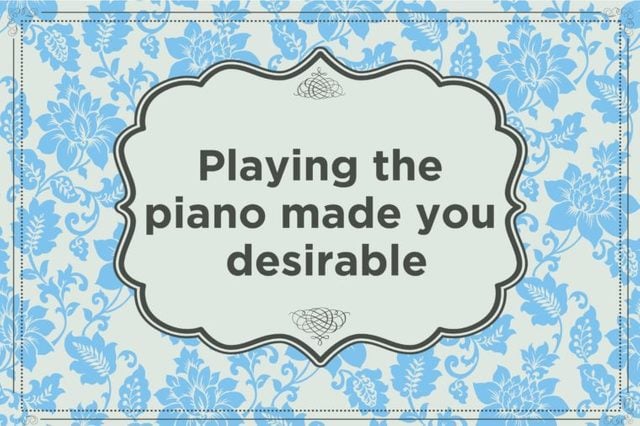 Tatiana Ayazo /rd.com, Shutterstock
Tatiana Ayazo /rd.com, Shutterstock
Playing the piano made you desirable
If you could bang out a tune on a baby grand you would be seen as quite a catch. Music was a very important component of social gatherings in upper class homes. And being able to play well was one way a woman could distinguish herself from the rest of her fellow socialites. Many young women were expected to play at social gatherings and functions.
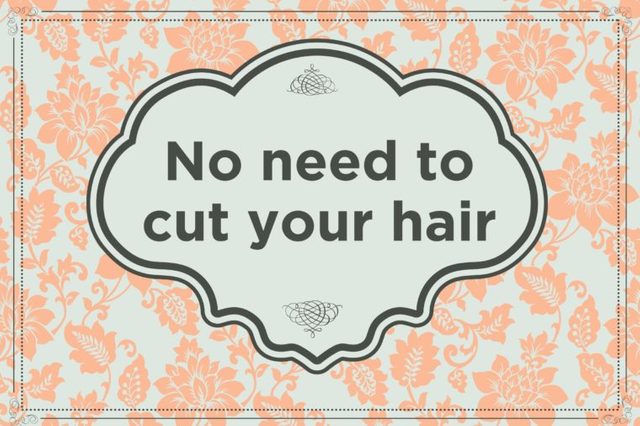 Tatiana Ayazo /rd.com, Shutterstock
Tatiana Ayazo /rd.com, Shutterstock
No need to cut your hair
Besides using hair accessories like combs and hairpieces, luscious long locks were what was fashionable for females back in the days of Queen Victoria. Forget dying their hair. Haircuts for Victorian women weren't a thing yet. With the exception of having their lady's maid trim ends to do away with splits, no one messed with a cascade of long tresses. However, it was also proper etiquette for women to always wear her hair up unless in the privacy of the bed chamber.
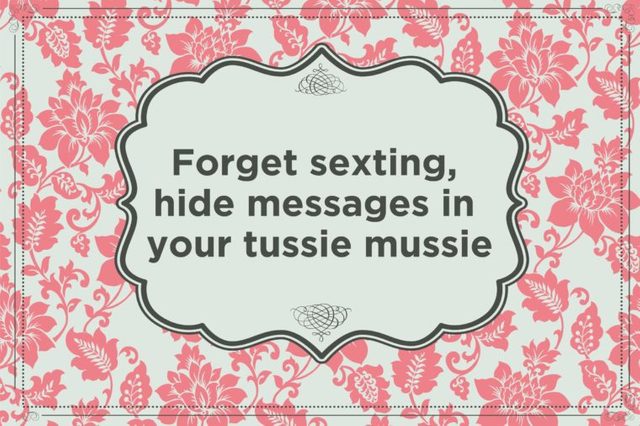 Tatiana Ayazo /rd.com, Shutterstock
Tatiana Ayazo /rd.com, Shutterstock
Forget sexting, hide messages in your tussie mussie
A small flower arrangement of fragrant herbs and bloom, the tussie mussie was originally created to ward off smells from stinky people and poor sanitary conditions. The allure of this aromatic nosegay (a.k.a., a small bunch of flowers) became linked with the language of flowers, which became all the rage in Victorian times. The nosegay was first used by Old Bailey lawyers to ward off germs from defendants. The fad quickly caught on and soon everyone was donning this" tussie mussie." Rumor has it that Lady Mary Wortley Montague used a secret code in her flowers to convey messages. Soon cryptic messages, often between would-be lovers, evaded the strict social protocols of the day, and hid within the accepted etiquette of carrying or wearing small flower bouquets. Most recently, it was Kate Middleton who carried a bridal bouquet in the style of the Victorian tussie mussie.
 Tatiana Ayazo /rd.com, Shutterstock
Tatiana Ayazo /rd.com, Shutterstock
Birds and dogs made cool pets
A caged wild bird or song bird was another way Victorians brought music into their homes and a pet into their lives. Another favorite pet, the Victorian pooch, was popular as long as one didn't bring them along when paying a call on a friend or acquaintance. As the 1840 book Etiquette for Ladies states:"To carry children or dogs with one on a visit of ceremony, is altogether vulgar. Even in half ceremonious visits, it is necessary to leave one's dog in the ante-room…As for animals, it is a thousand times better not to have them at all." Here's all the etiquette rules dog owners must know.
 Tatiana Ayazo /rd.com, Shutterstock
Tatiana Ayazo /rd.com, Shutterstock
Don't roll your eyes
Like children of today, there was a set of rules youngsters were expected to adhere to back in old England. All could be applied now and would probably unleash the same amount of eye rolling. While parents today threaten to take away cell phones or iPads, upper class Victorian parents left discipline to the nanny—or, they fall back on some lines of Victorian etiquette for kids that haven't changed much like "Never talk back to older people especially your father and mother" and "Never argue with your elders, they know best." And some that we should bring back like "Never allow your parents to bring you a chair and never allow them to get one for themselves. Wait on them, instead of being waited on."
 Tatiana Ayazo /rd.com, Shutterstock
Tatiana Ayazo /rd.com, Shutterstock
Put the cologne down
Hubpages.com notes another fine point of Victorian etiquette was how a gentleman should smell. Like guys attempting to impress a gal today, pouring a bottle of cologne on yourself is not the way to do it unless you are trying to suffocate her. Men take note of this advice that has lasted the test of time: "A gentleman should be seen and not smelled. They should use but little perfume as too much is in very bad taste." Next, check out the little etiquette rules you should always follow.
Originally Published: September 05, 2018
Sign up for articles sent right to your inbox
Enjoy the best stories, advice & jokes delivered right to your inbox!

Subscribe & SAVE Save Up To 84%!
Upholstery Design Colors New England Victorian Era
Source: https://www.rd.com/list/victorian-era-etiquette/
0 Response to "Upholstery Design Colors New England Victorian Era"
Post a Comment